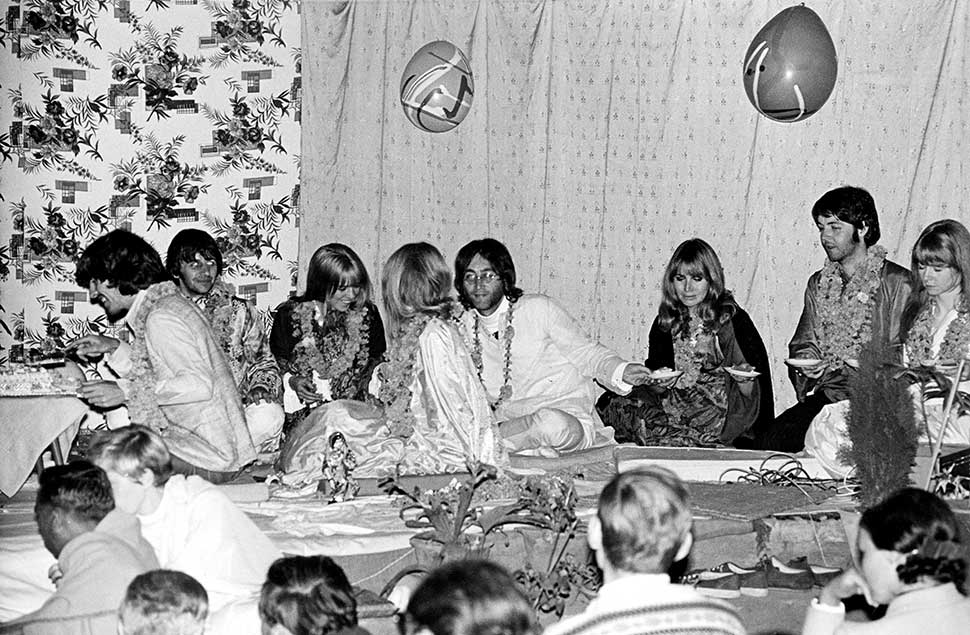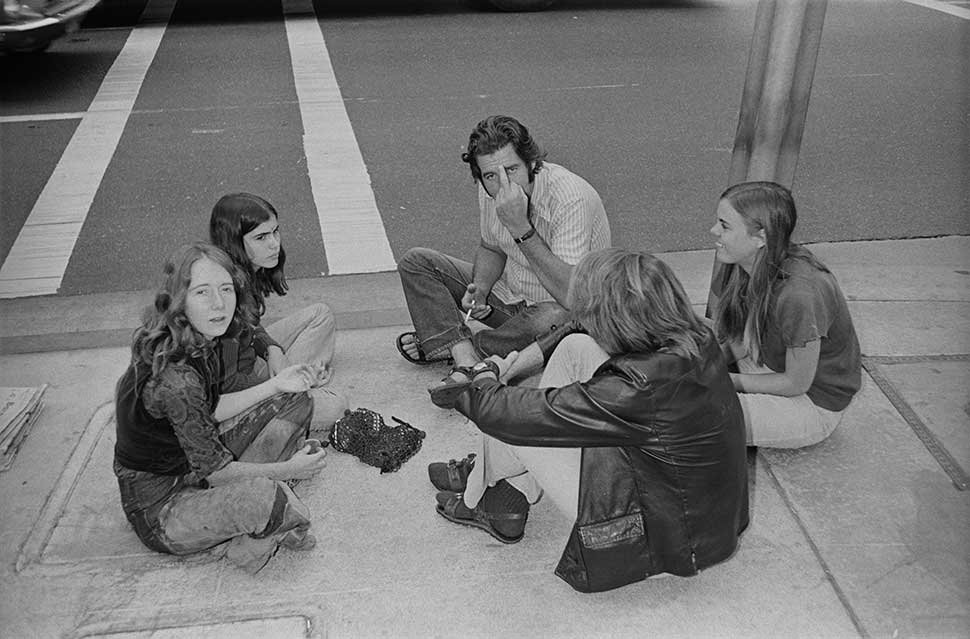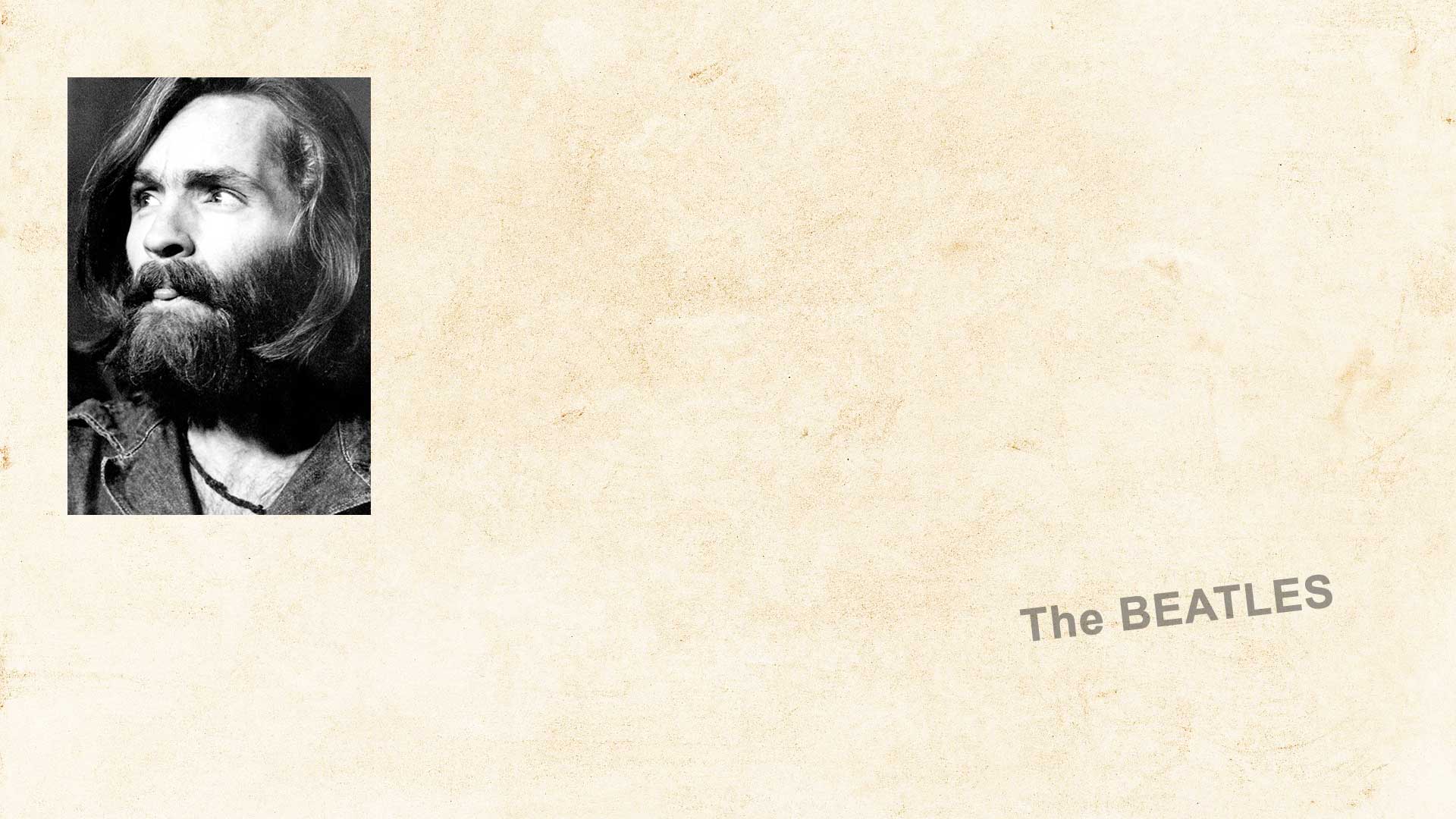By 1968, The Beatles had achieved unparalleled critical and commercial success. The album they released in the middle of 1967, Sgt. Pepper's Lonely Hearts Club Band, had been number one in the UK for 27 weeks, and Time magazine called it a "historic departure in the progress of music – any music".
It was on the heels of this success that the group travelled to Rishikesh, India for a spiritual retreat with Maharishi Mahesh, a chance to “get away from everything”, as John Lennon would later say. During the retreat, which lasted from February to April of 1968, the band spent long periods of time meditating and writing songs, and emerged with 40 new compositions, most of which would be recorded later that year.
Around the same time, thousands of miles away in the sun-drenched hills of Topganga, California, a musician of much less notoriety was writing his own songs. The man, a thirty-three year old ex-con named Charles Manson, had been paroled from the federal prison at Terminal Island the prior year and moved to San Francisco, where he traded up for a school bus and ultimately made his way to Los Angeles to seek the fame and fortune in the music industry he was certain awaited him.
The Beatles recorded their new songs between May and October of that year, and on November 22, released the album as a two-disc set in the UK. Three days later the album hit the shelves in America, and with its all-white packaging (save for the bands’ name embossed in Helvetica slightly below the middle of the album’s right side), it quickly became known as 'The White Album', each copy featuring a unique stamped serial number.

The album found favour with critics almost immediately upon its release; Richard Goldstein of The New York Times believed it to be "far more imaginative" than Sgt. Pepper. But not all critics were as receptive. Some felt the work was overblown, self-indulgent, and, in the words of the music critic from Time magazine, lacking a "sense of taste and purpose". Regardless, The Beatles had broken new ground musically, covering a diverse range of musical genres, including folk, British blues, ska, music hall and the avant-garde.
When the album finally fell into the hands of Manson, he raced back to the house he’d procured for his followers – known as 'The Family' – at 21019 Gresham Street in Canoga Park, a flat, suburban stretch of the San Fernando Valley northwest of Los Angeles, and began listening to it. Back-to-back. Cover-to-cover. Over and over again. Transfixed with the music, he became convinced the songs contained hidden messages The Beatles were sending directly to him. And once that idea took root, there was no turning back.
“He believed that The Beatles were the spokesmen,” record-producer Gregg Jacobson, who knew Manson personally and even recorded some of his songs, told Rolling Stone in a 1970 interview. “He believed they were singing about the same thing he already knew about. He believed they were all tuned in together. He thought he would meet The Beatles, he even sent some telegrams.”
Ex-Manson Family member Dianne Lake, in her book, Member of the Family, which she co-authored with Deborah Herman, writes about the impact the album had on Manson, and the rest of the group as a result. “He played that album over and over… because he wanted it to penetrate our consciousness. The record quickly became a fixture in the background.”
Manson, who often led his group through LSD-infused orgies and campfire sermons, had been preaching about an impending race war between blacks and whites and believed The Beatles’ music crystalized many of the ideas in his head. “Dig it, The Beatles know all about revelations and what is going to come down,” Lake quoted Manson as saying, “and they have been sending me messages through their music. They have been looking for me. They know that Man’s Son is here on earth to carry out this mission, but they haven’t known who I am.”
But what exactly was “this mission” Manson so believed The Beatles – who knew nothing of the diminutive, self-styled guru – expected him and the members of his flock to carry out?
“They talked about it freely around - around the campfires,” said Family member Leslie Van Houten, while incarcerated on murder charges at Los Angeles women's jail the Sybil Brand Institute, in November 1969. “They talked about killing the piggies.”
Dianne Lake says that when Charlie introduced the White Album, “the songs became his shorthand way to illustrate what was coming down.” The song Helter Skelter, a hard-driving rock number with an especially aggressive vocal performance by Paul McCartney, “became the key, because it sounded like chaos and destruction. From then on, the song title stood as our not--so-secret code name for the race war between the blacks and whites and the coming apocalypse.”
According to Paul Watkins, a member of the Family who served as Manson’s right-hand man and chief recruiter of new members, Helter Skelter would be the first in a series of events that would culminate in the Apocalypse. In October 1970, under cross examination at Manson's trial, he laid out the plan: "So, after Whitey goes in the ghettoes and shoots all the Uncle Toms, then the Black Muslims come out and appeal to the people by saying, 'Look what you have done to my people.' And this would split Whitey down the middle, between all the hippies and the liberals and all the up-tight piggies. And they would just kill each other off in the meantime through their war."

Manson had planned to lead his Family to Death Valley, where they would wait out the end of the war in a “bottomless pit”, a concept Manson had borrowed from the book of Revelation. “We started from the Revolution 9 song on The Beatles' album which was interpreted by Charlie to mean the Revelation 9,” Watkins testified. "In Revelations 9, it talks of the bottomless pit. It talks about there will be a city where there will be no sun and there will be no moon. And this was interpreted to mean-this was the hole down under Death Valley.”
In that hole, Manson prophesied, his flock would grow in number to 144,000 people, like the twelve tribes of Israel in the Book of Revelation. He said as much when asked about it by Rolling Stone. “It was the Beatles’ Revolution 9 that turned me on to it,” he told them. “It predicts the overthrow of the Establishment. The pit will be opened, and that’s when it will all come down. A third of all mankind will die. The only people who escape will be those who have the seal of God on their foreheads.”
But Manson didn’t stop there. He ascribed a special meaning to each and every one of the songs on the White Album, bending the lyrics to fit his own twisted ideology. In Rocky Racoon, a country-ballad featuring Old-West style honky-tonk piano played by producer George Martin, McCartney sings about a love triangle in which Rocky's girlfriend Lil Magill leaves him for a man named Dan, who punches Rocky in the eye. Manson, a self-admitted racist, interpreted the tune a little bit differently.
“Coon. You know that’s a word they use for black people,” he told Rolling Stone. “You know the line, 'Gideon checked out and he left it no doubt/to help with good Rocky’s revival.' Rocky’s revival – it means coming back to life. The black man is going to come back into power again. 'Gideon checks out' means that it’s all written out there in the New Testament, in the Book of Revelations.”
Blackbird, the first song Manson played for Dianne Lake, was also about the black uprising. “Don’t you see!” Charlie insisted. “The Blackbird is the black man. It is as plain as anything. And now they are ready to arise.” Piggies was a simple ditty about “pigs” - wealthy whites, law enforcement, “the man” that had been holding people like Manson down all those years (“have you seen the little piggies, crawling in the dirt?”).
Glass Onion, which even the most novice Beatles fan would easily interpret as a chronological review of Beatles’ hits up until the time of its composition, was, according to Family member Catherine “Gypsy” Share, pure prophecy. “There will be a door of water that will open up for us to enter,” she told Rolling Stone when they asked her about the Family’s pilgrimage to the desert. “You know the Beatles song, Glass Onion? Well, the glass onion is the door of water, and the ‘hole in the ocean’ is the pool in Death Valley.”
Some of Manson’s followers took things even further, listening to the album forwards and backwards, hunting for subtle messages buried in the compositions. Family member Clem Grogan, also interviewed for the Rolling Stone piece, found it difficult to contain his own racism when asked about Revolution 9, offering his own bizarre interpretation of the ethereal sound collage: “At the end of Revolution 9 there’s that shout, ‘Block that kick! Block that dick!' There are a lot of black men who want to put their pricks in white women. For hundreds of years the white man has been saying, ‘Don’t touch my woman!’ That’s like saying, ‘You want her, don’t you?’ And so the black man finally believed it and now he’s going to get it."
Whether or not Manson’s wild interpretation of the White Album played into his motivation to direct his followers to commit murder is anyone’s guess. The “Helter Skelter theory" served as the cornerstone of Vincent Bugliosi’s prosecution of Manson and his followers in what was at the time considered the “trial of the century”, and the ambitious attorney was successful in convincing a jury that the murders were committed in an attempt to ignite a race war.
Years after the murders, John Lennon was asked how he felt knowing his music might have inspired some of the most brutal murders the country has ever seen. “It has nothing to do with me,” he told Playboy in a 1980 interview. “Manson was just an extreme version of the people who came up with the ‘Paul is dead’ thing or who figured out that the initials to Lucy In The Sky With Diamonds were LSD and concluded I was writing about acid.”
Manson wouldn’t be the last Beatles’ fan inspired by their music to commit a heinous act. The same year he gave the interview to Playboy, Lennon was shot and killed in front of his apartment building by Mark David Chapman, a fan who travelled to New York City from Hawaii, angered by Lennon’s views on God – specifically the lyrics to his songs Imagine and God.
As for the White Album, its legacy is far reaching. By 2019 it had been certified 24 x platinum by the RIAA, with 12 million copies sold in the US alone. The album is still in high demand, and original copies with low serial numbers fetch hefty sums on eBay. One fan has even set up a website to showcase his collection of nearly 3000 copies (he’s buying more if you have one to sell.)
But for anyone who's delved into the strange, dark history of the Manson Family, it’s hard to listen to songs like Sexy Sadie, Happiness Is A Warm Gun and Dear Prudence without picturing Manson standing before his flock, arms flailing wildly as he preaches the “true meaning” of the album.
